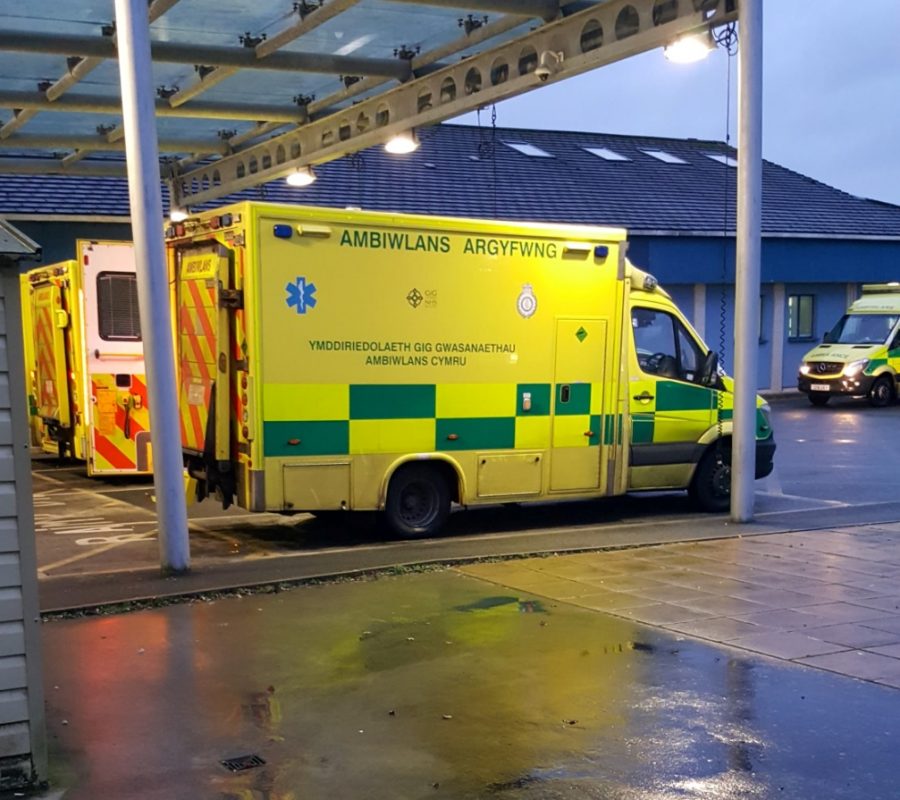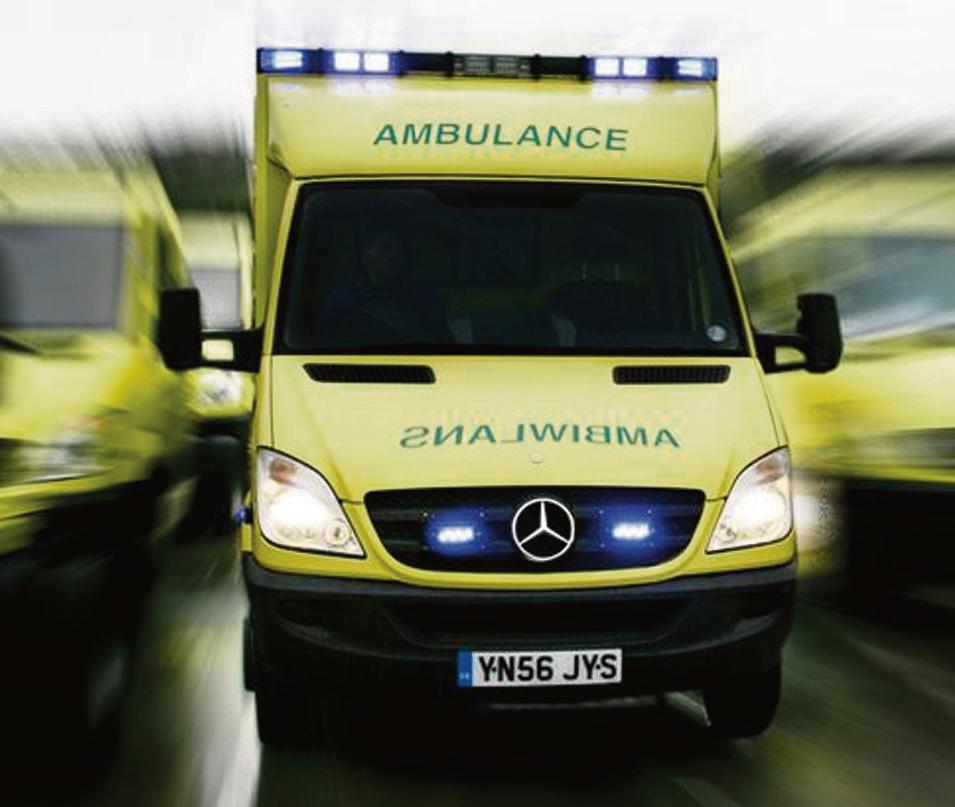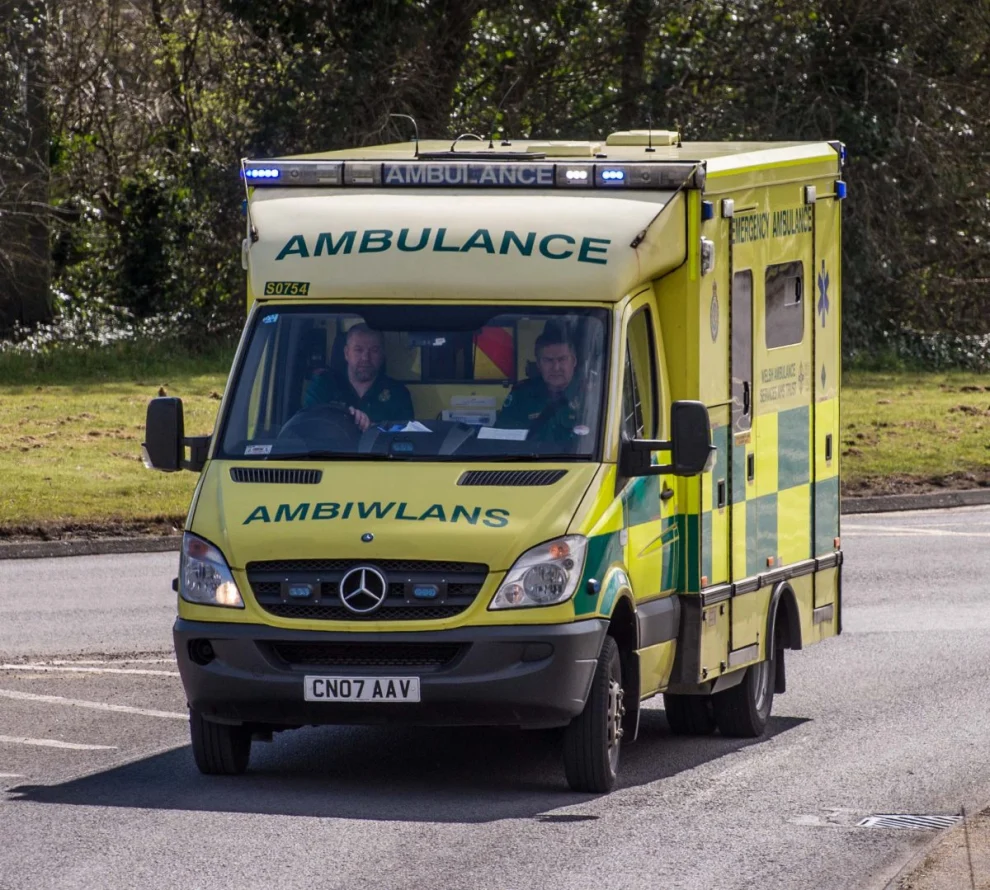OVER 10,000 people with serious conditions are waiting over an hour for an ambulance in Wales.
In figures obtained by the Welsh Conservatives, it was found 3,351 people that rang an ambulance and were designated amber in April had to wait over four hours for it to arrive.
According to monthly Welsh Government statistics, a staggering two-thirds (67.1% or 10,157) of amber ambulances took over an hour to reach their patient, but it took a written question from the Leader of the Opposition to find out exactly how long people had to wait.

The information uncovered that 344 people waited over 12 hours. 14 waited over a day for an amber call to be reached, half of which were in North Wales.
Calls for ambulances are triaged into red, amber, and green calls. Red calls are life-threatening but serious conditions like strokes are classified as amber by the Labour Government in Cardiff Bay.
Three red-calls also took over an hour to reach their patient in April, two in Dyfed and one in the Swansea Bay health board area.
Only 51% of responses to immediately life-threatening calls arrived within eight minutes, down from 61% in April 2021. The target of 65% of red-calls reaching their patient within eight minutes has not been reached in over 18 months.
It follows news of dozens of incidents when police cars had to be deployed as ambulances.
Commenting, Welsh Conservative and Shadow Health Minister Russell George MS said: “It is scandalous how long people have to wait for ambulance in Wales, no matter how serious the emergency – if you’re in need of one, your problem needs urgent attention.
“I cannot imagine the anguish people feel as they or a loved one are left languishing in pain because Labour’s mismanagement of the NHS has turned ambulance provision into a postcode lottery.
“We know that ambulance delays are down to them getting stuck at A&E departments, full and slow-moving because of issues in accessing other parts of the NHS.
“That’s why Labour need a plan to ensure people come to hospital as a last resort, not because they have no confidence in or access to other parts of the health service.”

Andrew RT Davies MS, the Welsh Conservative leader who submitted the question, added: “These waits are very concerning, more so because we had to dig them up because ministers do not routinely publish them.
“We know the pandemic has hit all aspects of the NHS hard, but we know that the NHS under Labour has been in dire straits for a long time and ambulance waits have been going downhill for a while.
“As I told the First Minister back in March, he has failed to plan for the end of Army assistance in the ambulance service and now patients and paramedics are paying the price.”
Responding to the publication of Healthcare Safety Investigation Branch’s Interim Bulletin Harm caused by delays in transferring patients to the right place of care, Dr Henderson said: “It is well-known among health care professionals, especially the Paramedicine and Emergency Medicine workforce, that ambulance handover delays cause serious harm to patients. Instances of ambulance handover delays became a frequent and serious threat in late 2020 and early 2021 and in response to this rising threat The College published Ambulance Handover Delays: Options Appraisal. In November 2021, The Association of Ambulance Chief Executives published their report Delayed hospital handovers: Impact assessment of patient harm which found that these delays were leading to an unacceptable level of patient harm and presented a serious risk.
“We welcome the HSIB interim bulletin and its safety recommendations, we urge the Department of Health and Social Care to prioritise and urgently act on these recommendations. The situation continues to worsen, and it is highly detrimental to patient safety, to paramedic and EM staff, and public confidence in the emergency care services. Critically, the Urgent and Emergency Care system is failing to function as it should, we must do all we can to change that.”
Figures released recenerly show that in last month only half (51.2%) of red ambulance calls were met within the target time across Wales. In some areas such as Hywel Dda Health Board it is as low as 39%.
The Welsh Liberal Democrats are calling on the Welsh Government to address waiting times for primary care services to relieve the pressure on A&E.
Commenting Jane Dodds MS said: “This simply cannot go on. Our NHS staff and ambulance are doing everything they can, but people’s lives are at risk when ambulance response times are so poor.
“Week after week I hear stories of people waiting hours for an ambulance, hours for treatment in A&E and even being treated in the back of ambulances sat outside our hospitals.
“The Welsh Labour Government is failing time and again to address the crisis in our NHS.”
A Welsh Government spokesperson said: “As the health service continues to recover from the pandemic, and more people are coming forward with health concerns, we have seen the highest number of referrals for a first outpatient appointment since January 2020, with just over 115,000 referrals made in March. This increase in referrals helps to explain why the total waiting lists size increased by 1.4% on the previous month. It should be noted that activity levels for treatment and outpatients are at their highest level since the start of the pandemic.
“The number of outpatients appointments in March, was the highest since January 2020 (255,384). On top of this the numbers of inpatient and day case treatments, were the highest since the start of the pandemic.
“The number of patient pathways closed in March, that is people who have started or no longer require treatment, was the highest since the start of the pandemic, 1.7% more per day on average than in February.
“While the total numbers waiting for diagnostic tests continues to increase, the numbers waiting over the 8 weeks target decreased for the second month in a row to their lowest level since April 2021 and by 4.9% compared to February 2022.
“March also saw the highest level of activity in cancer services since December 2020. There was a 12.4% increase in the number of people starting their first treatment following a new cancer diagnosis, compared to the previous month. 12,643 pathways were closed following patients being informed they did not have cancer, an increase of 11.1% on February 2022.
“The Planned Care Recovery Plan published last month set out a series of ambitions. The first ambition was to reduce the number of open pathways waiting over 52 weeks for a first outpatient appointment to zero by the end of 2022.
In In March 2022, the number of pathways waiting over 52 weeks for the first outpatient appointment decreased by 1% compared to February.
“In March 2022, the number of pathways waiting over 52 weeks decreased by 4.8% compared to March 2021.
“Despite the percentage of patient pathways waiting more than 36 weeks increasing in March, the average time waiting for treatment fell and the proportion waiting less than 26 weeks increased.”
“This month sees the first publication of 111 data since the service was rolled out across Wales. In April almost 86,000 calls were made to the 111 service, an average of 2,863 calls per day. The service is run by the Welsh Ambulance Services NHS Trust and can be accessed online at 111.wales.nhs.uk or by telephone by calling 111, will give people up-to-date health advice and guidance on which NHS service is right for them.
“999 emergency ambulance and emergency department staff and services remain under considerable pressure and performance is not where we want it to be. Our Six Goals for urgent and emergency care programme has been launched to support improvements in outcomes and experience by helping staff to deliver the right care, in the right place, first time whenever possible.
“There was a decrease in average daily attendances to emergency departments in April, and a slight improvement in performance against the targets. The number of life threating ‘red’ calls remains high, increasing by 36% when compared to the same month in 2021. There is a live national delivery plan in place to support continuous improvement, including in support of tackling ambulance patient handover delays.
“It is important to note that during March nearly 400,000 patient consultations were seen by the NHS in Wales for emergency or elective treatment.”

















